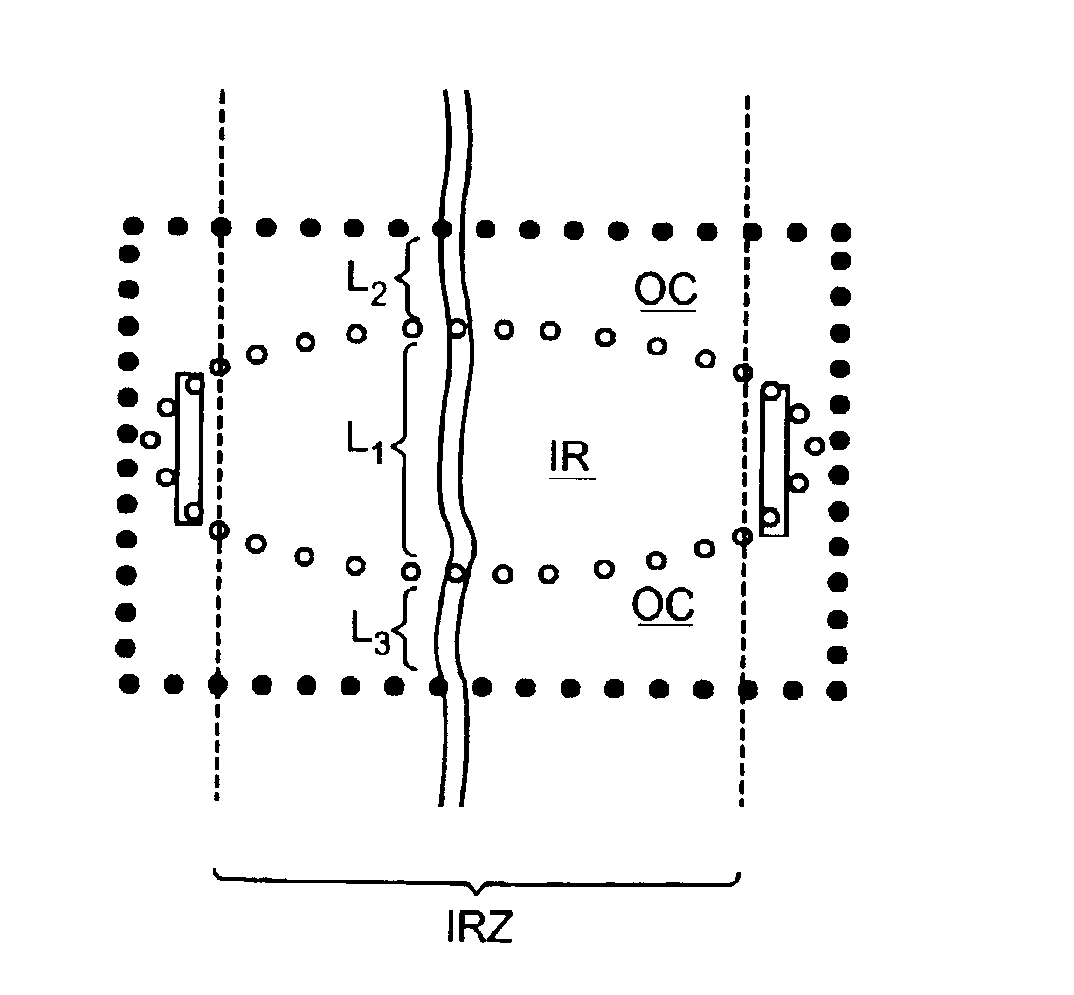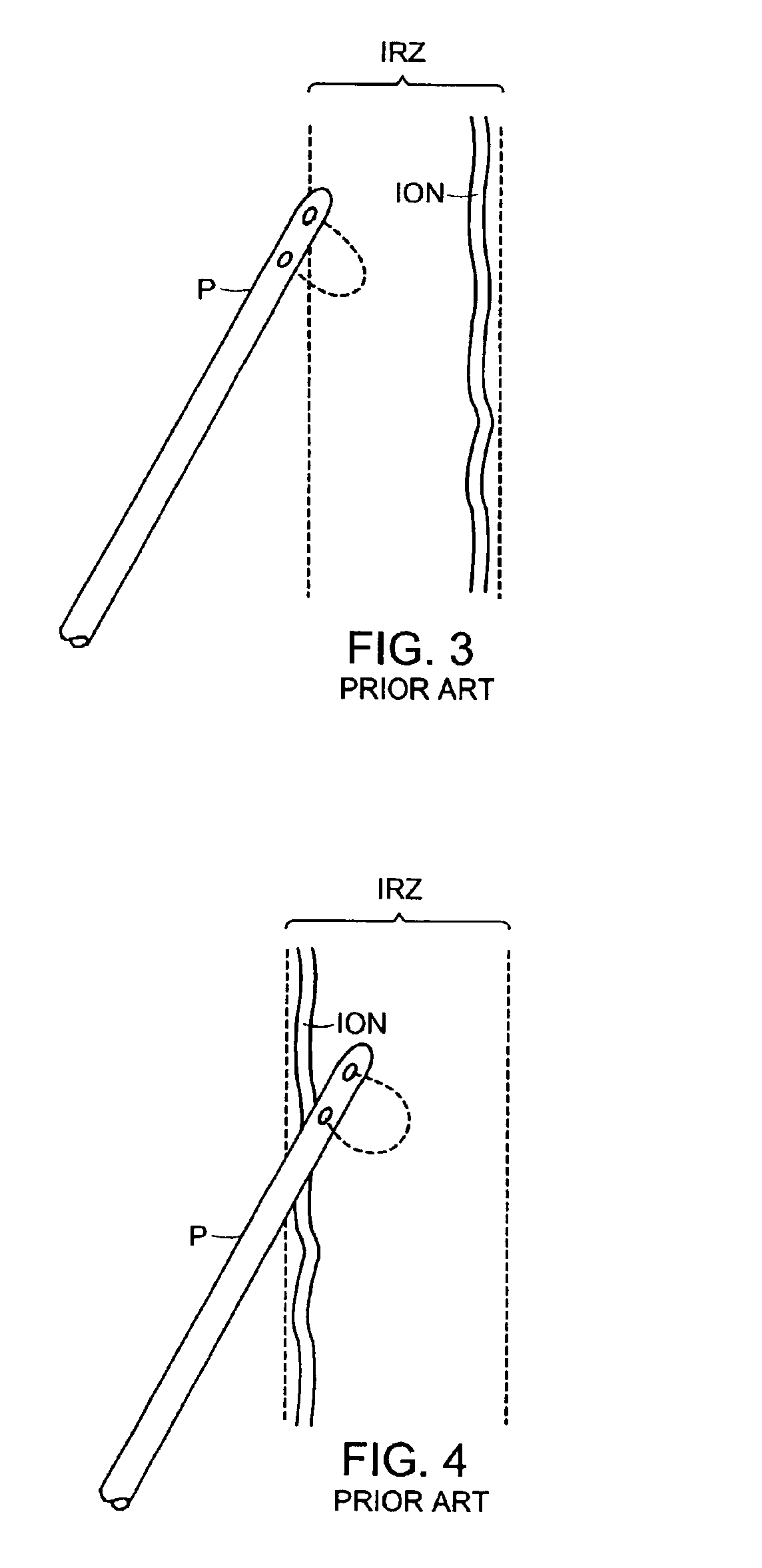Method of straddling an intraosseous nerve
a technology of intraosseous nerve and bvn, which is applied in the field of straddling an intraosseous nerve, can solve the problems of affecting the precise location of the electrode cannot be easily identified by x-ray, and the difficulty of knowingly placing the electrode in close proximity to the bvn. , to achieve the effect of reducing the volume of bone tissue affected
- Summary
- Abstract
- Description
- Claims
- Application Information
AI Technical Summary
Benefits of technology
Problems solved by technology
Method used
Image
Examples
example i
[0228]This prophetic example describes a preferred dual probe embodiment of the present invention.
[0229]First, after induction of an appropriate amount of a local anesthesia, the human patient is placed in a prone position on the table. The C-arm of an X-ray apparatus is positioned so that the X-rays are perpendicular to the axis of the spine. This positioning provides a lateral view of the vertebral body, thereby allowing the surgeon to view the access of the apparatus into the vertebral body.
[0230]Next, a cannulated stylet comprising an inner stylet and an outer cannula are inserted into the skin above each of the respective pedicles so that the distal tip of each stylet is in close proximity to the respective pedicle.
[0231]Next, the probe is advanced interiorly into the body so that the stylet tips bores through the skin, into and through the pedicle, and then into the vertebral body. The stylet is advanced until the tips reach the anterior-posterior midline of the vertebral body...
example ii
[0234]This example describes the efficacy of heating a large zone of a vertebral body with a bipolar energy device.
[0235]A pair of probes were inserted into a vertebral body of a porcine cadaver so that the tips of the electrodes were located substantially at the midline and separated by about 4 mm. Each electrode had a cylindrical shape, a length of about 20 mm, and a diameter of about 1.65 mm2 (16 gauge) to produce a surface area of about 100 mm2.
[0236]Next, and now referring to FIGS. 28a and 28b, thermocouples 0-14 were placed within the vertebral body at the 15 locations. Thermocouples 0-4 were placed halfway between the electrode tips and were separated by a distance of 2 mm. Thermocouples 5-9 were placed about at the midpoint between the probe tips, and were vertically separated by a distance of 2 mm Thermocouples 10-14 were placed along the distal portion of the probe and were separated by a distance of 5 mm.
[0237]Next, about 57 volts of energy was applied across the electrod...
example iii
[0240]This embodiment describes a preferred articulated probe embodiment of the present invention.
[0241]The initial steps described above in Example I are carried out so that the articulated probe is poised on the patient's skin and held in place by a ratchet type gun. See FIG. 31a.
[0242]Next, the distal end of the articulated probe is inserted into the skin above a pedicle so that the distal end of the fixed probe is in close proximity to the pedicle.
[0243]Now referring to FIG. 31b, the probe is advanced interiorly into the body so that the distal tip bores through the skin, into and through the pedicle, and then into the vertebral body. The distal tip is advanced until it reaches about 30% beyond the anterior-posterior midline of the vertebral body.
[0244]Now referring to FIG. 31c, the distal end of the pusher rod is inserted into the bore of the fixed probe and advanced until the angled portion of the pusher rod contacts the angled portion of the pivotable probe, thereby nudging ...
PUM
 Login to View More
Login to View More Abstract
Description
Claims
Application Information
 Login to View More
Login to View More - R&D
- Intellectual Property
- Life Sciences
- Materials
- Tech Scout
- Unparalleled Data Quality
- Higher Quality Content
- 60% Fewer Hallucinations
Browse by: Latest US Patents, China's latest patents, Technical Efficacy Thesaurus, Application Domain, Technology Topic, Popular Technical Reports.
© 2025 PatSnap. All rights reserved.Legal|Privacy policy|Modern Slavery Act Transparency Statement|Sitemap|About US| Contact US: help@patsnap.com



